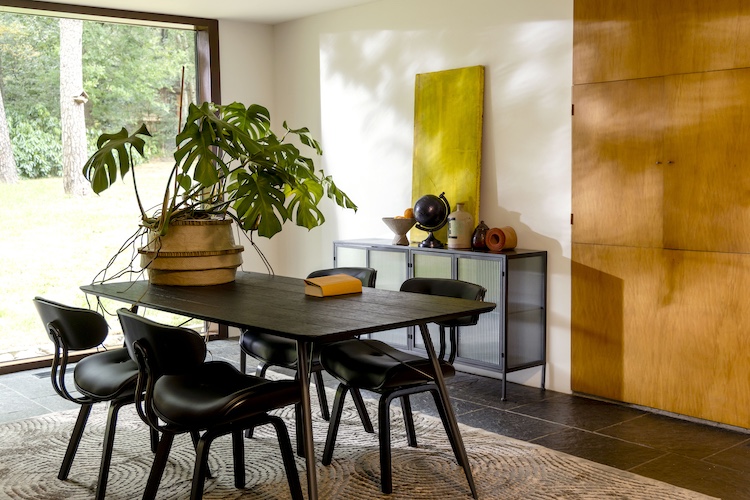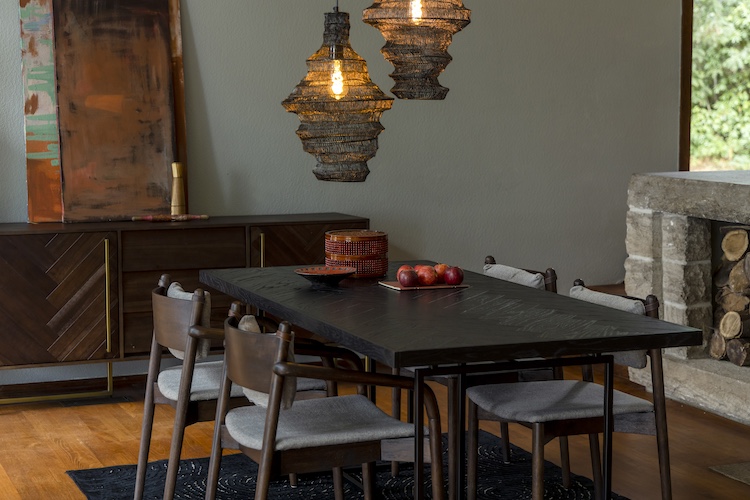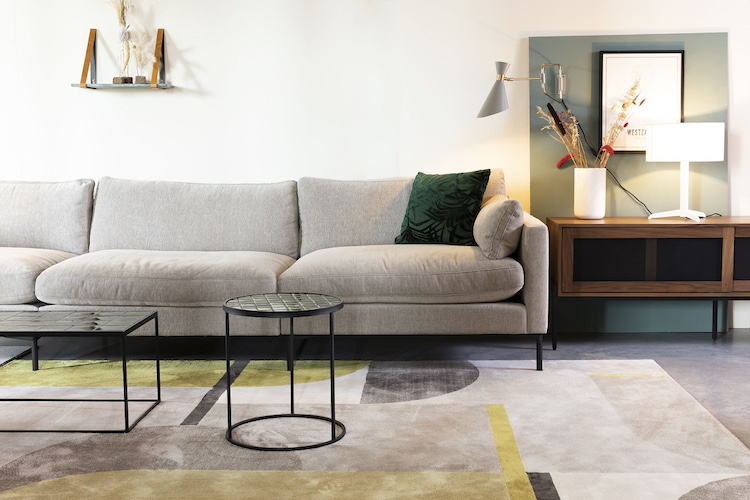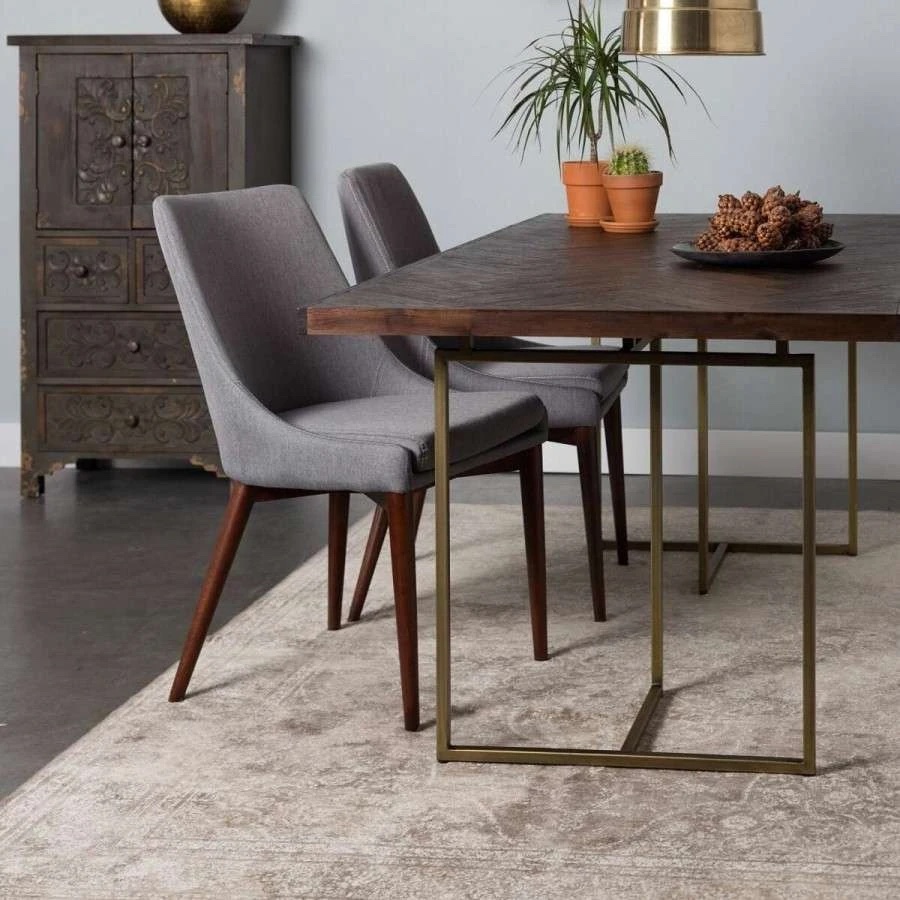- Furniture
- 0 likes
- 603 views
- 0 comments

Open-plan living has become a defining feature of modern UK homes, offering flexibility, natural light, and a sense of space that's perfect for sociable lifestyles.
Whether you’re living in a city flat or a renovated country house, designing an open-plan space that combines both living and dining areas can feel like a balancing act. You want each zone to serve its purpose, but you also want the whole room to feel cohesive and connected.
The secret lies in smart design choices that give each area its own identity while ensuring a sense of harmony flows throughout. Here we share our tips to help you style an open-plan living and dining space that feels both functional and beautifully considered.
.jpg)
Define Your Zones with Intention
When working with an open-plan room, the layout is the foundation of everything else. Without walls to separate spaces, it’s important to create a clear sense of purpose for each area. The way you position your furniture can subtly define the zones without the need for physical dividers.
For example, placing a corner sofa or a large rug in the lounge area can help to visually mark the boundaries of the living space. We love the flexibility of Swyft Sofas, which offer modular styles that you can build out into the perfect configuration for your living area.

Similarly, positioning your dining table close to a large window can create a natural dining ‘zone’ that feels distinct yet still part of the wider room.
Maintaining an easy flow between the zones is also essential, think carefully about how people will move through the space and avoid blocking pathways with oversized furniture or clutter.
Use Colour to Create Visual Cohesion
In an open-plan setting, your colour scheme plays a vital role in tying everything together. Rather than decorating each area in a completely different style, it’s better to select a shared colour palette that can run throughout both zones. This doesn’t mean everything has to be the same shade, but there should be a sense of continuity.
Neutral base colours such as soft greys, warm whites or muted earth tones are a safe starting point. From there, you can add interest with complementary accent colours, perhaps dusky pink cushions on the sofa echoed in a piece of artwork above the dining table, or navy dining chairs that match a feature wall in the lounge.
Repeating tones across textiles, furniture, and accessories will give the space a more pulled-together feel.

Make Lighting Work Harder
Lighting is one of the most overlooked elements in open-plan design, yet it’s one of the most powerful tools you have to shape how each area feels. In a space that combines living and dining functions, it’s crucial to layer different types of lighting to suit each use.
In the dining area, a statement pendant light, like the Lena Mesh Pendant Lamp, hung over the table immediately creates a sense of purpose and occasion. It helps anchor the table as the focal point of that zone, whether you’re hosting dinner or enjoying a quiet cuppa.
In the living space, softer lighting such as table lamps, wall sconces, or floor lamps helps to build a more relaxed and intimate atmosphere, ideal for winding down in the evenings.
Dimmable lights or smart bulbs that allow you to adjust brightness and tone can make it easy to transition the space from bright and practical to cosy and ambient with minimal effort.
Select Furniture In a Similar Style
While the living and dining zones serve different purposes, the furniture in each should feel like it belongs to the same overall design story. This doesn’t mean you need to buy everything in matching sets, but the materials, finishes and scale of the pieces should feel harmonious.
For instance, if your dining table is made from light oak, consider a coffee table or shelving unit in a similar tone for the lounge area. If you have velvet dining chairs, a velvet cushion or ottoman in the living space can help link the two areas subtly.
.jpg)
Pictured: Zuiver Storm Natural Dining Table
It’s also important to consider the size and visual weight of the furniture. A large, chunky farmhouse table might look out of place next to a delicate mid-century style sofa, so try to maintain some consistency in the proportions and style of your key pieces.
Bring Warmth and Interest Through Texture
Open-plan rooms often benefit from tactile layers that soften the space and make it feel more welcoming. With fewer dividing walls and more open space, there’s a risk that things can feel a little cold or impersonal if you don’t add texture.
This is where soft furnishings and natural materials come into play. Think wool rugs, linen curtains, woven baskets, velvet cushions and chunky knit throws.
In the dining area, upholstered chairs or a fabric runner can add softness and balance out the harder surfaces of the table and floor. These elements not only boost comfort, but they also add depth and visual interest, helping the space feel more “lived-in” and less like a showroom.

Use Rugs to Anchor Each Area
Rugs are a simple but incredibly effective way to ground each zone in an open-plan room. In the living area, a large rug, like the Zuiver Hilton Yellow Rectangular Rug placed beneath the sofa and coffee table helps to define the space and adds a sense of cosiness.
In the dining area, a rug beneath the table can help it feel like its own distinct space, especially in larger rooms.

Pictured: Dutchbone Class Dark Wood Dining Table
When using multiple rugs in one space, make sure they complement each other in tone and texture. You don’t want them to clash or feel like they’re from entirely different design schemes. Opting for rugs in similar materials or colours, even if the patterns differ, can help maintain visual harmony.
Prioritise Storage and Organisation
One of the challenges of open-plan living is that everything is always on display. Without walls or doors to hide behind, any clutter or mess becomes immediately visible, which can quickly make the space feel chaotic. Smart storage is key to keeping things tidy and maintaining a calm, organised environment.
Think about multifunctional furniture, like ottomans that open up for storage, dark wood sideboards that double as room dividers, or shelves that provide both style and practicality.
.jpg)
Pictured: Blanco Honey Yellow Circular Dining Table and Exhibit Extra Large Honey Yellow Display Cabinet
It’s also worth zoning storage to match the function of each area: baskets for throws and remote controls in the living space, a cabinet or console table for placemats and crockery near the dining area. The goal is to keep daily essentials accessible, without allowing them to take over the room.
Add the Finishing Touches
Once the core layout, furniture, and colours are in place, it’s time to bring personality into the space. Art, accessories, and decorative touches give each area a distinct identity while making the whole room feel more considered and curated.
Use artwork to draw attention to each zone; perhaps a large framed print above the sofa, and a statement piece or gallery wall above the dining table.
Echo similar themes or colours between the two areas to maintain consistency without being too matchy-matchy. Houseplants, vases, books, and candles can all help bring warmth and life to the room, especially when styled thoughtfully in both zones.
Design with Balance in Mind
Styling an open-plan living and dining area is about more than just making it look nice, it’s about creating a space that works practically, feels comfortable and reflects your personal style. The most successful spaces manage to strike a balance between functionality and flow, structure and softness, unity and variation.
By taking time to plan the layout, keep your colour palette consistent, and introduce texture, lighting and thoughtful furniture choices, you’ll be well on your way to a space that feels effortlessly cohesive, without losing the unique character of each zone.

Comments (0)